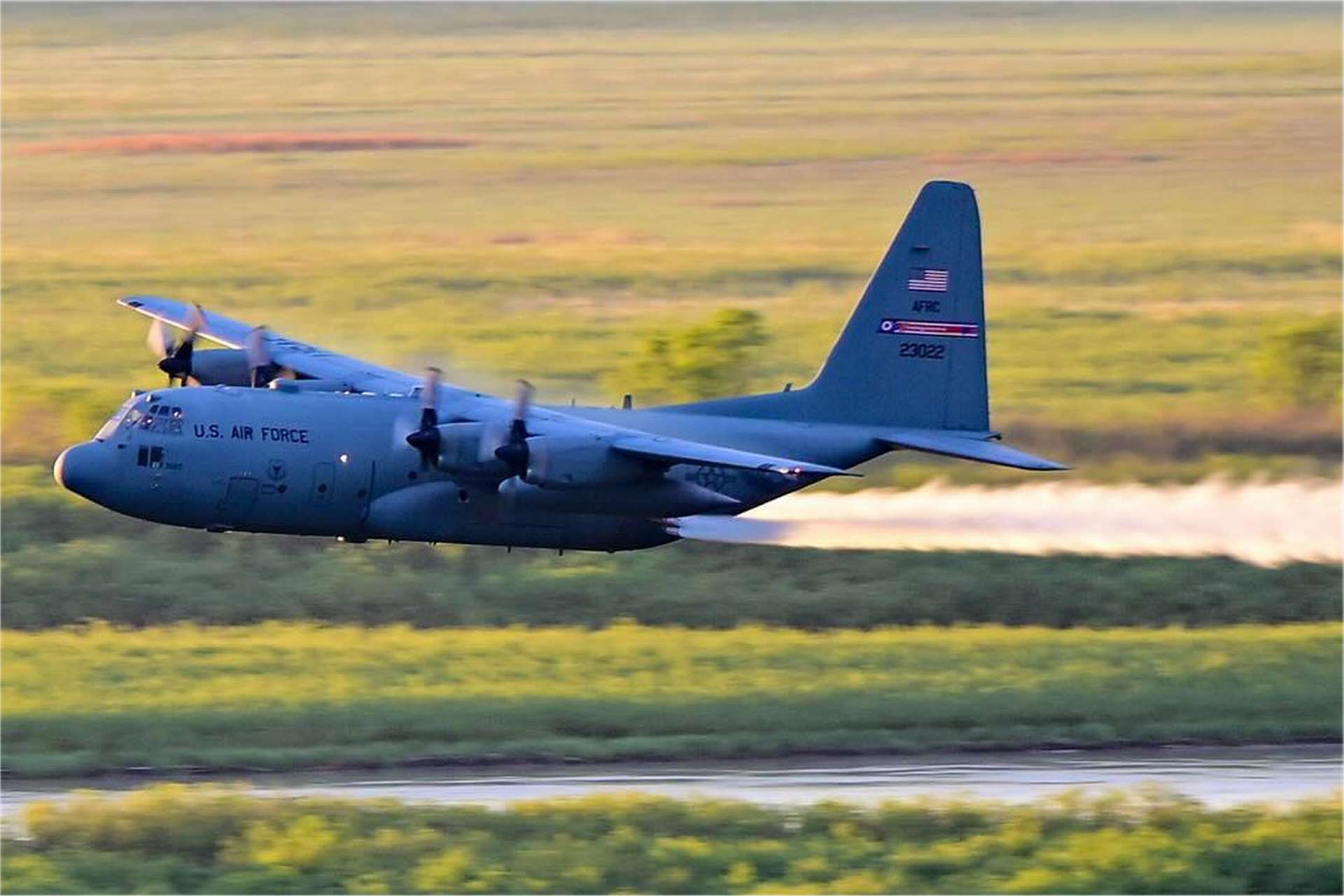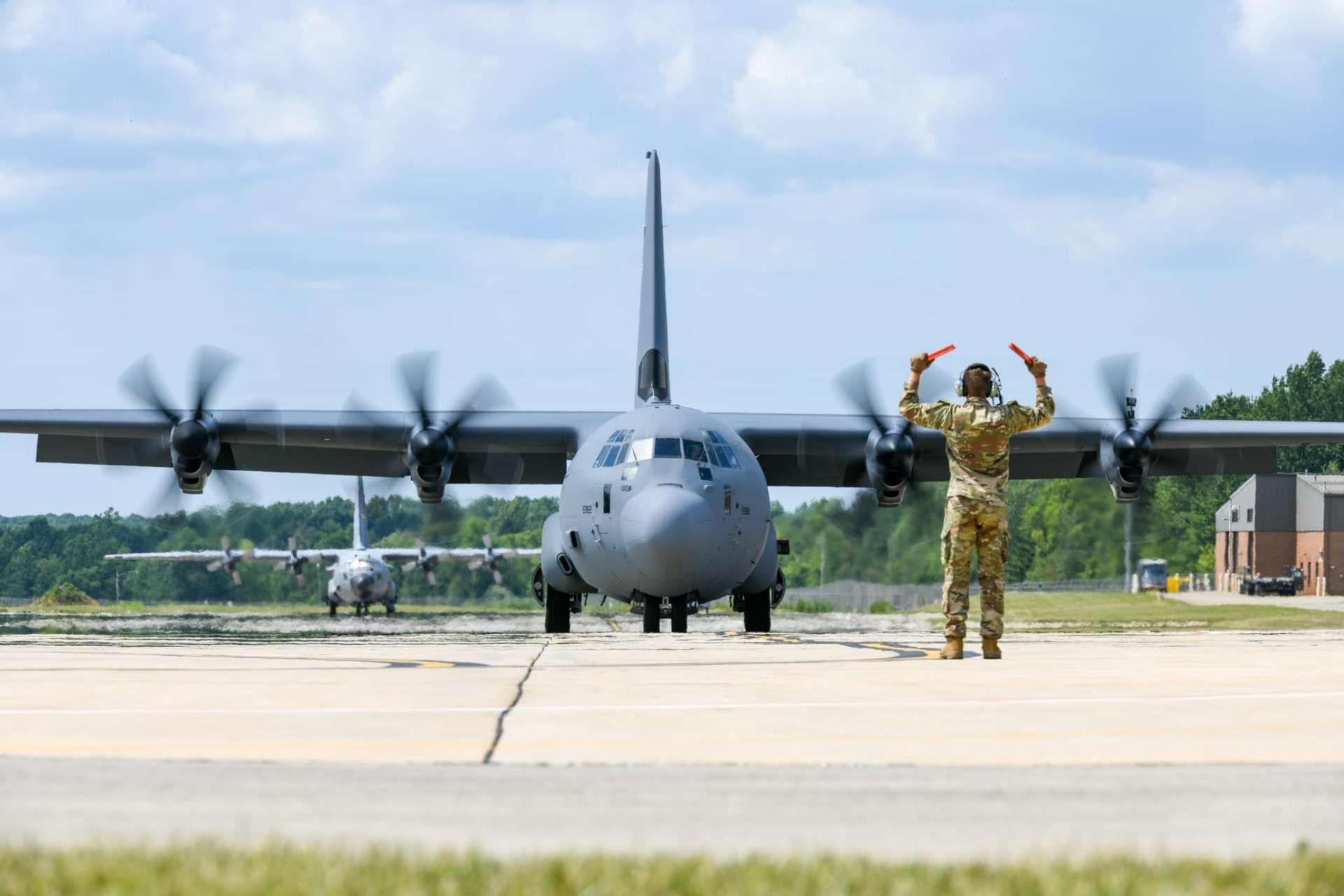Breaking News
Lockheed Martin Delivers First C-130J-30 Super Hercules with Aerial Spray Mission to USAF.
On July 17, 2024, Lockheed Martin announced the delivery of the first of eight C-130J-30 Super Hercules tactical aircraft destined for the Youngstown Air Reserve Station in Ohio. This delivery marks the introduction of a new mission for the Super Hercules: aerial spraying.
Follow Army Recognition on Google News at this link

Boeing C-130J-30 Super Hercules Aerial Spraying Aicraft (Picture source: US DoD)
The 910th Airlift Wing of the Air Force Reserve is the only unit to maintain the Department of Defense’s large-scale, fixed-wing aerial spray capability in the United States. This critical mission is aimed at eliminating disease-carrying insects and pests, as well as dispersing oil spills in large bodies of water. The C-130J Super Hercules, already known for its versatility, now supports 19 different missions, including this new aerial spray capability.
"Lockheed Martin is honored to deliver the most advanced Super Hercules ever built to the 910th Airlift Wing, bringing high-tech technology and supporting a critical mission for the Air Force Reserve," said Rod McLean, Vice President and General Manager of Lockheed Martin's Air Mobility & Maritime Missions line. "The C-130J is constantly evolving, as demonstrated by this 19th mission capability, ensuring that the Super Hercules remains ready for the future with unmatched versatility and tactical airlift power."
The 910th Airlift Wing, a long-time operator of the C-130 Hercules since 1981, has operated various versions of the C-130 for over 40 years. This new fleet of C-130Js ensures the continuity of the unit's tactical airlift and aerial spraying missions, while offering enhanced capacity in terms of space, speed, range, and versatility for decades to come.
"As we welcome the first C-130J to the Youngstown Air Reserve Station, we mark a decisive moment in our mission readiness," said Major General Melissa Coburn, Commander of the 22nd Air Force. "The C-130J Super Hercules stands as a symbol of our Air Force's enduring strength and versatility, ensuring that we continue to meet our nation's needs with excellence."
The Air Force Reserve operates a mixed fleet of C-130Js and legacy aircraft. The integration of the C-130J Super Hercules enhances the fleet's operational readiness at any given time, offering unprecedented reach and interoperability.
"The tactical airlift and aerial spray missions of our wing require a capable, reliable, and adaptable airframe. Our C-130H Hercules have provided that for decades. As we retire them from service at Youngstown, we look forward to continuing their track record of success with a new fleet of C-130J Super Hercules," said Colonel Mike Maloney, Commander of the 910th Airlift Wing.
Always innovating, the Super Hercules continues to set standards and shape the future of tactical airlift missions. The global fleet of C-130Js, operated by 26 nations with more than 20 airworthiness certifications, has logged nearly 3 million flight hours across 545 aircraft. These diverse experiences across various scenarios have enhanced the C-130J's readiness for all future missions.
Furthermore, the United States Air Force (USAF) plays a crucial role in managing the aerial spraying mission, leveraging its unique capabilities to address specific public health and environmental challenges. Here's why this responsibility falls to the USAF:
First, the USAF possesses rapid deployment capability and logistics that enable it to mobilize aerial resources effectively at both national and international levels. This mobility is crucial for quick intervention in health emergencies, such as epidemics caused by disease-carrying insects, or in response to environmental disasters like oil spills.
Secondly, the USAF has technical and operational expertise in managing its fleets and conducting complex missions. This gives it a particular proficiency in integrating and operating advanced technologies necessary for aerial spraying, ensuring precise and effective application of treatments over large areas.
Moreover, beyond its defense duties, the USAF also has a mandate to support civilian authorities during national crises or disasters. Aerial spraying falls within this remit, serving as an essential tool for public health protection and environmental safeguarding, in line with its national support obligations.
The USAF also invests in training and research, developing new technologies and methodologies. Managing aerial spraying missions allows it to refine these innovations, enhance tactics, and train personnel in specialized operations essential for diverse missions.
Lastly, the USAF frequently collaborates with other federal agencies, such as the Environmental Protection Agency for environmental issues or the Centers for Disease Control and Prevention for health matters. These partnerships increase the effectiveness of government responses and facilitate a fruitful exchange of resources and knowledge.
In summary, the USAF is perfectly positioned to assume responsibility for aerial spraying due to its rapid response capabilities, technical expertise, and commitment to national support missions, making it an indispensable player in managing health and environmental crises.

Boeing C-130J-30 Super Hercules Aerial Spraying Aicraft arriving at the Youngstown Air Reserve Station in Ohio (Picture source: US DoD)


























